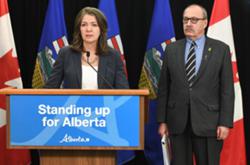
[Editor's note: This Tyee special series, in cooperation with the Environmental Law Centre at the University of Victoria, reveals what B.C.'s leading experts in environmental law say most needs to be fixed, and their specific suggestions for change. To read all their recommendations, download the free electronic publication "Maintaining Natural British Columbia for Our Children: Selected Law Reform Proposals." Today, we look at ways to protect urban wild places.]
In the 1990s, British Columbia doubled the park system by setting aside millions of hectares, mostly in remote areas. Today's challenge is to bring that kind of effort closer to home, protecting natural areas in the communities where we live: the neighbourhood stream, the town's favourite meadow, the city's beloved beach, the forest where children play after school.
Each year, B.C. grows by over 60,000 people and 30,000 new homes as development engulfs the Fraser Valley, the Okanagan and southern Vancouver Island. If we want to maintain the British Columbia lifestyle, we need a province-wide plan to conserve natural lands in and around our burgeoning cities and towns.
A Community Green Space Strategy would protect those nearby places where we can escape for a few moments to listen to the sounds of nature instead of the sound of traffic. It would give our children "wild places to be young in." And it would ensure that our great-grandchildren will still thrill to the sight of salmon, deer and eagles not far from home.
In addition a strategy would address critical environmental and economic concerns. For example:
Meeting one of the greatest threats to biodiversity. Communities tend to be located in the fertile, temperate valleys where wildlife is most abundant and diverse. Urban or farm development threatens twice as many species as extractive industries like logging and mining.
If our endangered fisheries are to survive, we must improve protection for natural areas around urban streams. Urbanization has been a major factor in reducing the number of streams that support Georgia Strait coho from 100 to about 20.
A conservation strategy also makes good economic sense. Communities that maintain natural areas are going to be the economic winners in the 21st century. CEOs move businesses to places where they want to live -- and studies show that the quality of an area's physical environment is one of the top two factors in siting an enterprise. As a prominent Oregon corporate official put it, "The liveability of Oregon is our competitive edge in economic development. Practising healthy environmental stewardship isn't just a matter of good citizenship; it's also a matter of good business." When Microsoft established its new gaming centre in Victoria, a company spokesman said that the city's liveability was one of two reasons for locating there, and pointed out that creative people "pay attention to their environment.”
Clearly, protecting community green space addresses critical human, environmental and economic needs. But much needs to be done if we are going to avoid losing the quality of life that attracted us here in the first place. An earlier instalment in this series identified the need for regional sustainability strategies. In addition, the following actions should be taken to expand parks and protect other green space near our homes.
Create greenways for the 21st century
Set the goal of completing a greenways network in every B.C. community within 10 years. New green corridors would connect each community's open space: parks, stream corridors, beaches, schoolyards, rail rights-of-way, farms and forests.
Within a decade, every British Columbian would live within a 20-minute walk of a continuous park system that would take them across the community and out into the countryside, without once getting into a car.
A number of B.C. communities are developing extensive greenways networks. However, the provincial government should follow the example of Maryland and several other states and launch a province-wide greenways initiative. It should consider the U.S. federal government's rule of dedicating a percentage of gasoline taxes to the creation of greenways.
Set green development rules and cut red tape
Some jurisdictions require developers to give the public more green space than B.C. currently does. B.C. could increase its requirements.
In addition, we should cut the red tape that makes it hard for developers to "cluster" housing on one part of a property. Such creative cluster developments can often leave 50 to 80 per cent of the land as green space, contributing to community greenways networks at no additional cost to taxpayers. Yet, today it is sometimes easier for developers to get approval for conventional subdivisions that fragment the entire property into houses, streets and lawns.
Raise money to buy natural lands
B.C. should consider innovative funding for an ambitious green space program. More than 30 American states allow taxpayers to donate their income tax refund to habitat acquisitions by simply checking a box on their tax return. California raises over $40 million annually by selling an "environmental licence plate." A percentage of proceeds from the sale of Crown lands could also be dedicated to land purchases.
Perhaps most intriguing, a number of U.S. states raise environmental funds by reclaiming "abandoned" pop bottle deposits -- the nickels or dimes that customers paid but never redeemed -- from the bottling industry. A British Columbia "Pop for Parks" program might raise more than $10 million annually.
Mobilize the private sector to save land
Government simply cannot afford to buy all the land that needs to be purchased. Yet the private sector has enormous potential to help. Millions of hectares have been protected by private citizens in the U.S., and this "land trust" movement has grown dramatically in B.C., helping for example to save Jedediah Island and Matthews Point on Galiano Island. But more needs to be done.
Government can encourage land trusts by matching privately raised dollars with public money. Many U.S. states use "matching grant" programs to encourage private donations to land trusts, and B.C. has previously had great success with this approach. In 2004, the province endowed the BC Trust for Public Lands with $8 million, and charged land trusts and other partners with raising $3 for every one public dollar invested. In the end, partners far exceeded the target, raising almost $42 million in non-provincial funding. In sum, government sparked $50 million in conservation investments at a public cost of less than 20 cents on the dollar. Government should set up a new version of this highly successful program.
Ensure that every British Columbian is aware they can write a "Will for Wildlife" that leaves the proceeds of their estate to protect habitat. If land trusts can capture just one per cent of the assets bequeathed over the next 25 years, a billion dollars would go into land conservation.
Make developers throw away the cookie cutters
Why do all subdivisions look familiar, whether you're in Sacramento or Surrey? Too often a standard subdivision design is pulled off the shelf and imposed on the land with little attention paid to topography, hydrology and plant cover. Instead of designing a development that respects unique natural landscapes, bulldozers make the land fit the standard plan.
We can prevent unnecessary bridging of streams, filling of wetlands and fragmentation of endangered meadows if we require developers to "design with nature." This simply means that the first step in design is to identify key natural features, then plan around them instead of designing everything around a standard road system grid.
Designing with nature pays off for developers, too. For example, by maintaining natural watercourses, they can dramatically reduce the need for costly storm sewers. Road and bridge cost can also be reduced for the same number of housing units.
We lack neither the knowledge nor the resources to preserve our wild places. But who has the vision to protect the B.C. way of life? Who has a plan to save the natural lands at our doorstep?
For more information, see:
Greenways and Growth: Conserving Natural Areas in BC Communities. Fisheries and Oceans Canada and Ministry of Municipal Affairs and Housing. ![]()
Read more: BC Politics, Environment, Urban Planning + Architecture















Tyee Commenting Guidelines
Comments that violate guidelines risk being deleted, and violations may result in a temporary or permanent user ban. Maintain the spirit of good conversation to stay in the discussion.
*Please note The Tyee is not a forum for spreading misinformation about COVID-19, denying its existence or minimizing its risk to public health.
Do:
Do not: